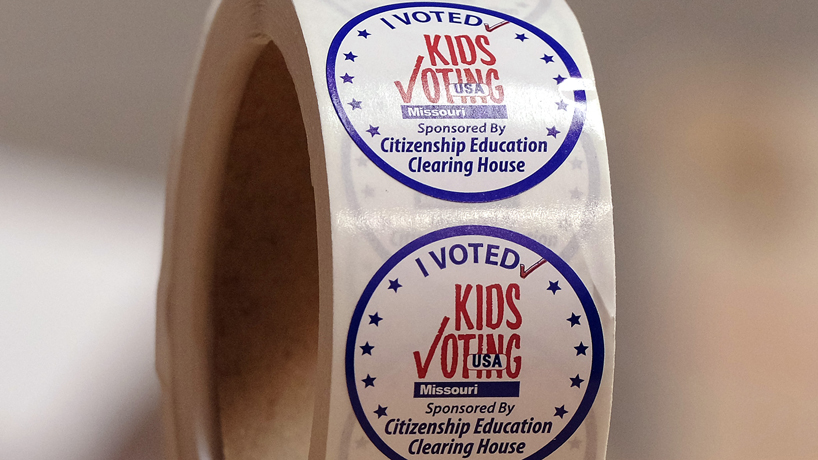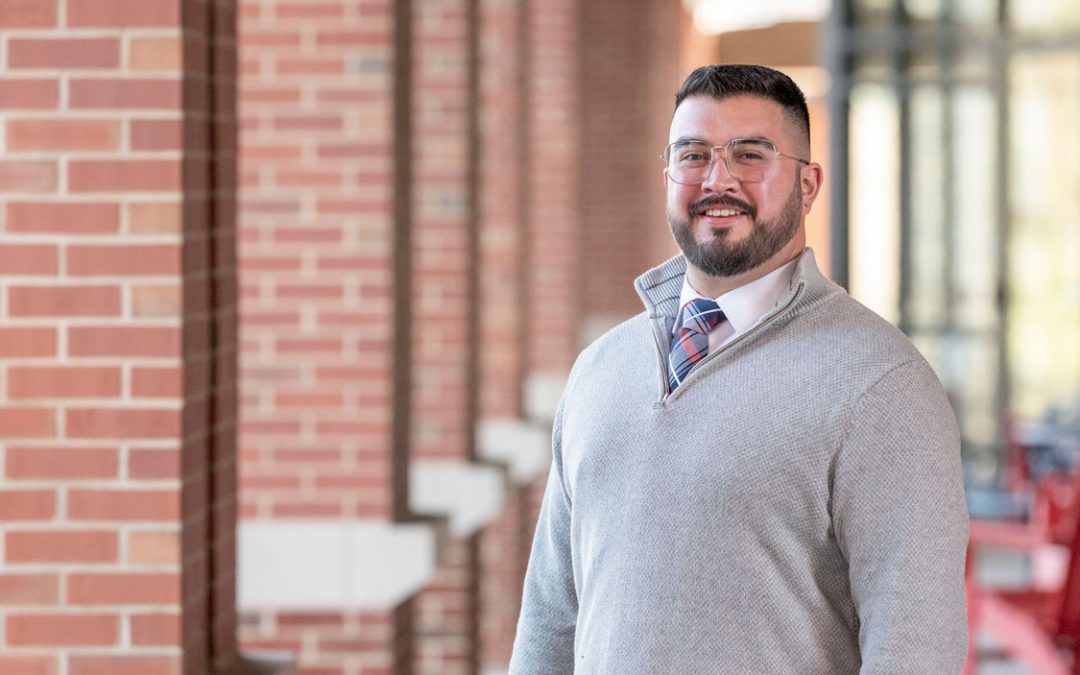
Kids Voting Missouri, a program sponsored by the Citizen Education Clearing House at the University of Missouri–St. Louis, aims to create lifelong voters by teaching pre-K-12 students about various aspects of the democratic process including citizenship, democracy, government and voting. This year about 150,000 St. Louis-area students will have the opportunity to participate in an authentic voting experience, which replicates the adult voting process. (Photo by August Jennewein)
The highly anticipated 2020 presidential election has generated much interest among voters and resulted in an avalanche of early votes, with more than 22 million ballots already submitted by mid-October.
St. Louis-area students are also getting the chance to participate in what’s shaping up to be a historic election through a youth voting program sponsored by the Citizen Education Clearing House at the University of Missouri–St. Louis.
The Kids Voting Missouri initiative is an affiliate of Kids Voting USA, a national nonprofit, nonpartisan voter education program. Lynn Voss, director of program operations for the CECH, noted that UMSL’s College of Education, via the CECH, has administered the program for more than 20 years.
It is designed to create lifelong voters by teaching pre-K-12 students about various aspects of the democratic process including citizenship, democracy, government and voting. Participating schools are encouraged to hold civil classroom debates, while students learn to individually research issues and candidates.
These activities culminate in an authentic voting experience, which replicates the adult voting process, on or near election day. Voss said Kids Voting Missouri will provide federal and state ballots for grades K-12, along with a few supplemental, nonpolitical ballots for younger students in pre-K through 2nd grade. Students will cast their votes through the DoubleClick Democracy online voting system.
“Typically, we have about 20 school districts participating in this program each election cycle,” Voss said. “This year, we will have about 15 school districts and approximately 150,000 students participating.”
Still, the program has grown a great deal since it started in 1996 with just the Ritenour School District. In the inaugural year, 6,600 K-12 Ritenour students had the opportunity to vote in that year’s presidential election. Over the last 24 years, more than 1.1 million St. Louis-area students have cast a Kids Voting Missouri ballot – a 62 percent participation rate.
Voss said administrators at participating school districts have already tested the voting system and set voting windows between Oct. 12 and Nov. 3. However, like their adult counterparts, students will have to wait for the results.
“On the evening of Nov. 3, I will pull the reports and voting results for each of the school districts and provide that data to them,” Voss said.














